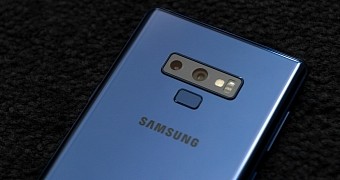Samsung is projected to take the wraps off the Galaxy S10 flagship series of phones in early 2019, but new details about the device keep making the headlines every now and then.
And today, it’s the turn of the camera to get some exclusive time in press reports across the world, as the technical specifications of the new configuration allegedly leaked.
Basically, there will be three different Galaxy S10 versions launching next year, and the top-of-the-range will use a triple-camera system. With three apparently the magic number for the upcoming Samsung phone, details about the camera made the rounds today (as per SamMobile).
While the exact layout of the lens isn’t known just yet, it’s believed the Galaxy S10 will first and foremost come with the 12-megapixel sensor that’s currently used on the Galaxy S9. This sensor boasts f1.5/2.4 variable aperture lens, and it would be paired with a secondary 16-megapixel unit featuring f1.9 aperture and 123-degree field of view.
The third sensor in the aforementioned setup could be a 13-megapixel f2.4 aperture unit. Samsung is believed to be working on adapting the camera configuration for different scenarios, so the three sensors could work together for better shots, each serving various roles depending on the conditions.
Launching in late January or early February
Of course, it’s a bit too early to tell whether these are accurate details or not, but some skepticism is definitely recommended.
However, there are more and more sources indicating that a triple-camera system is very likely for at least one Galaxy S10 model launching next year, while the other two may sick with a dual-camera configuration.
Samsung is also expected to bring a fingerprint sensor embedded into the glass on this model, though more recent speculation indicated that the company may eventually decide to move this tech to the side of the phone.
Facial recognition would continue to be offered, but it wouldn’t include any 3D sensing sensors, as it’s the case of Apple’s iPhone XS and iPhone XS Max.

 14 DAY TRIAL //
14 DAY TRIAL //